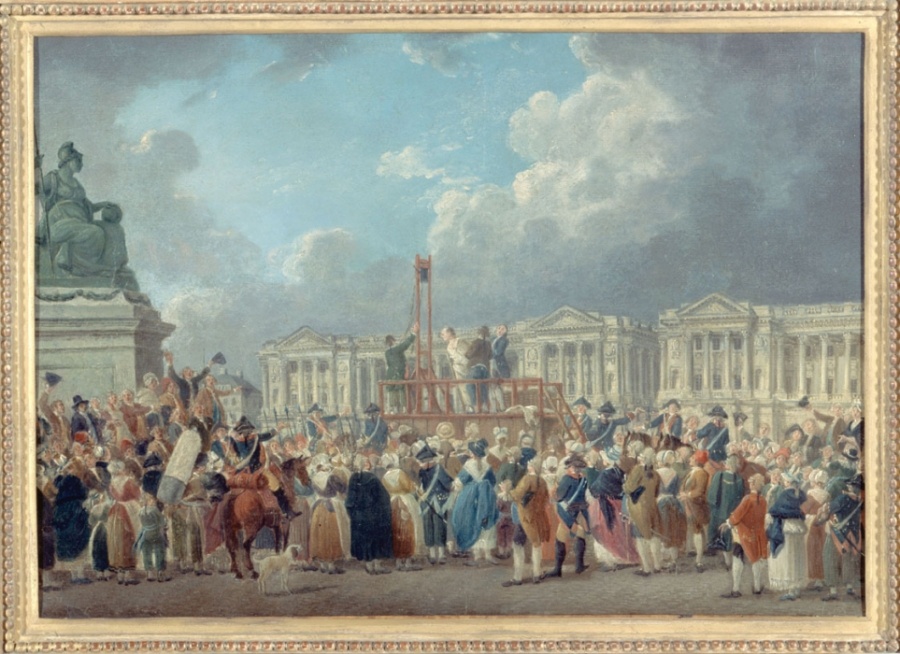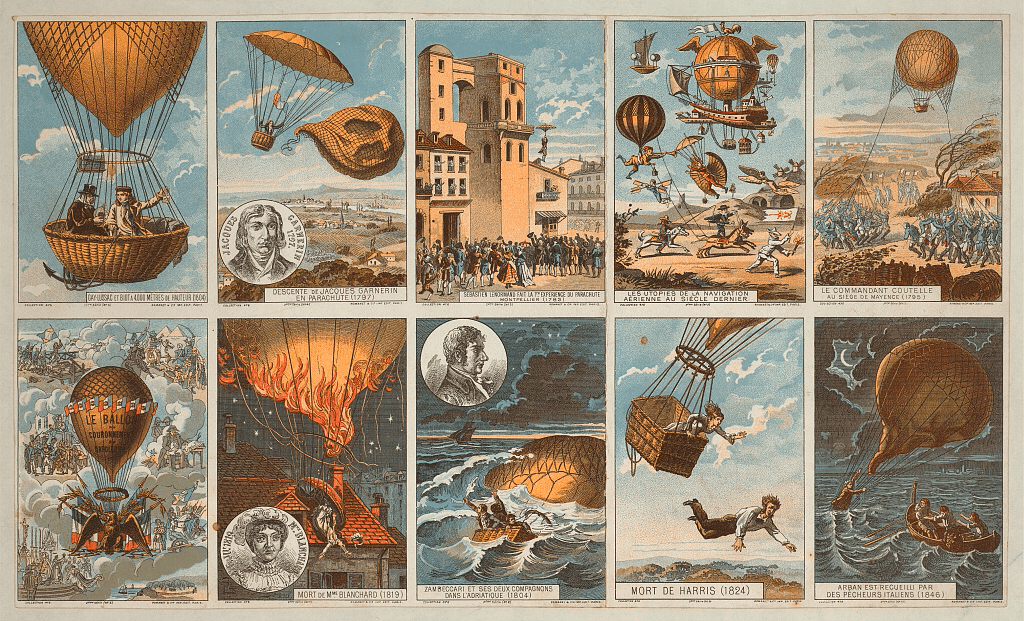On 28 July, 1794, loud cheers were heard all over Paris when the sharp blade of the guillotine descended onto the head of Maximilien Robespierre. The despised dictator was dead and the Reign of Terror was finally over. Within France there was a palpable sense of lightness, almost giddiness, a feeling that the worst was over. Women in Paris embraced their liberty and embarked on their own revolution – a revolution in fashion. Enter, Les Merveilleuses.
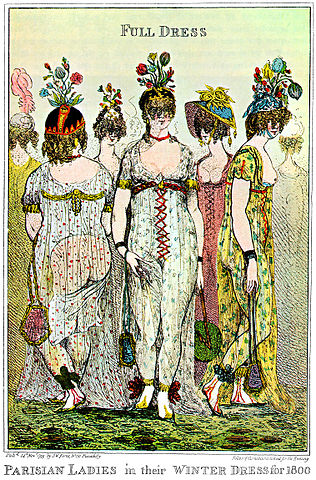
Les Merveilleuses, or marvellous women, were so named for their completely outrageous fashion style and behaviour in the dying days of the 18th century. Diaphanous and floaty fabrics were draped Grecian style over near-nude bodies, leather sandals criss-crossed naked legs and bare toes modelled the latest style in golden rings. Neo-classical was definitely in, and women were determined to express their freedom through fashion no matter the weather; it’s perhaps no coincidence that deaths amongst young women related to pneumonia and other respiratory illnesses were higher than usual at the time.
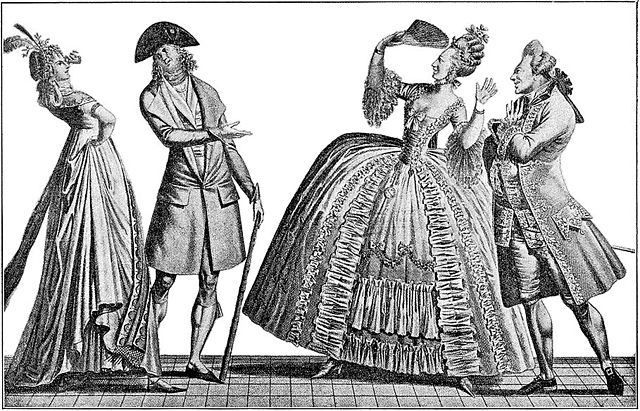
Looser gowns and softer fabrics were already becoming popular preceding the fall of the Bastille in 1789. Marie Antoinette was famously (and scandalously) painted by Elisabeth Vigée-Le Brun wearing a white muslin dress and a simple straw hat in 1786. The rigid and richly decorated court dresses were already a thing of the past by the time the tricolour cockade arrived. The waist had been slowly rising for several years, and as the revolution progressed there was a move towards a more relaxed female shape.
But the Merveilleuses took revolutionary fashion to a whole new level.
The Merveilleuses curled their hair tight around their heads, put flowers behind their ears, donned sandals on bare legs, and wore filmy puff-sleeved dresses scooped low over the bosom. Unsuited to the muddy streets of Paris—or indeed, for venturing outside, other than in high summer—the gowns were best worn at evening parties. Every curve of the body was exposed, and any dancer could feel the warm flesh of his partner while proceeding around the floor. Unlike the torturous gowns of Versailles, the Thermidor frocks were easy to whip off. Despite the Paris chill, dresses had become so diaphanous that people said the “sans-culottes had given way to the sans chemises.”
Kate Williams, Ambition and Desire: the dangerous life of Josephine Bonaparte, Hutchinson, 2014.
Accessories included hats of all shapes and sizes – black silk caps, velvet with ribbons, turbans with egret feathers, the cornette and the capote. The fashionable carried a tiny handbag, a balantine or réticule, made from lace or silk or even metal, which often hung from the belt.
The neo-classical look is just as it sounds; a homage to the classical past. As the French floundered for an identity, they looked to the empires of Greece and Rome for inspiration. The Grecian tunic was a very popular style, with swathes of white lawn or cotton fabric draping the body. What was underneath these gowns varied, though if you were truly marvellous there would be as little underwear as possible.
The fashion magazine Journal des Dames et des Modes dedicated pages to these fashionable women, beginning in 1797.
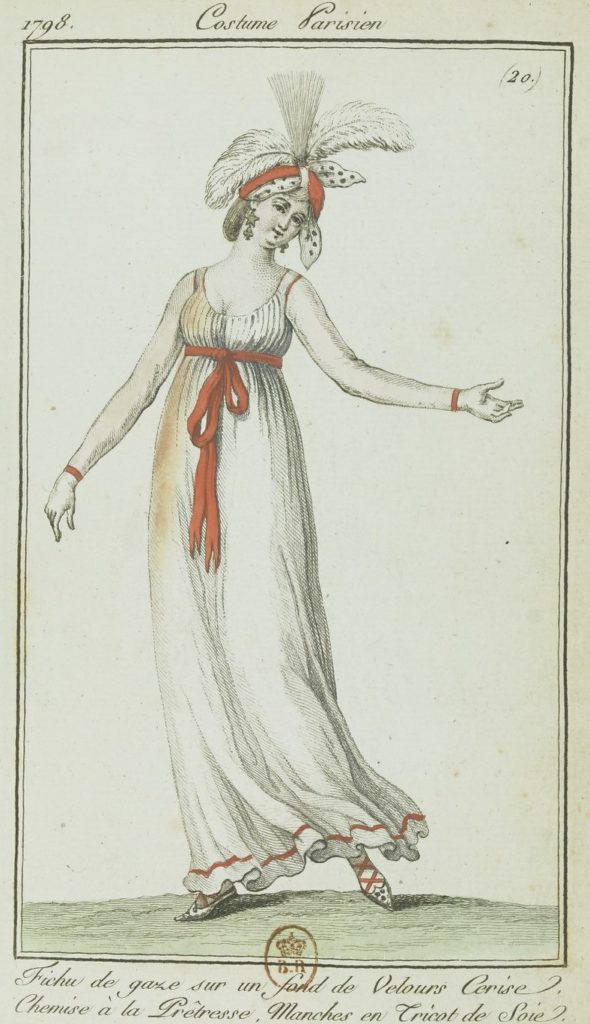

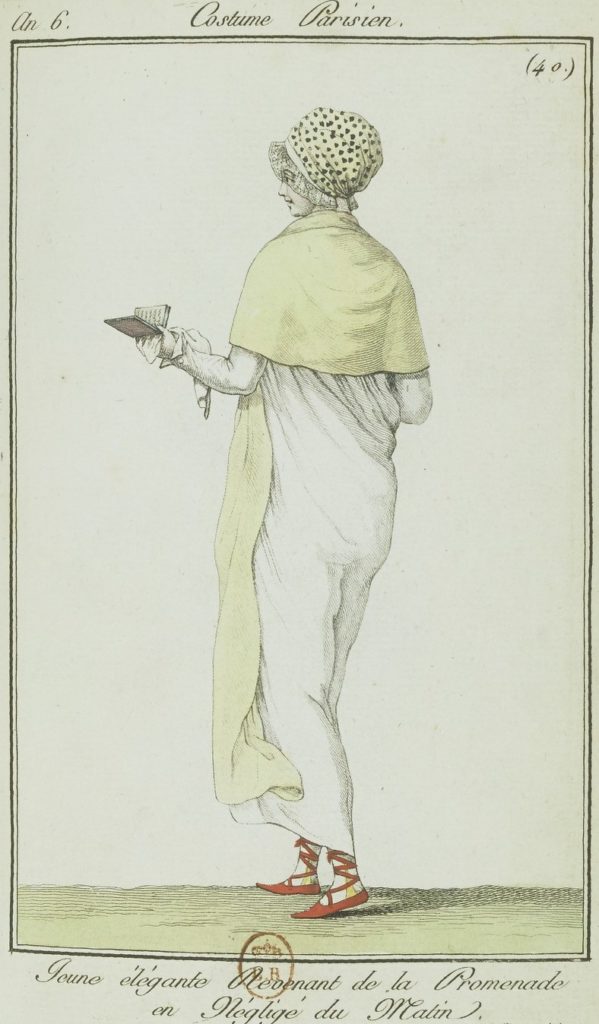

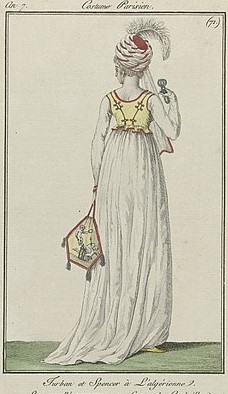

Click here to see the full collection of fashion plates from the Journal des dames et des modes at Gallica.
They were young and probably quite overjoyed at having kept their heads during the Reign of Robespierre. These were the wives and lovers of the new leaders of France, the Directoire, and it was time for a new image. France was no longer a monarchy, and the bourgeoisie were the new kings. Extravagant and indulgent parties became the norm, celebrating their survival and near-death escape from the guillotine. These revelries, often hosted by important figures of the post-revolutionary government, the Directoire, sometimes descended into little more than debauchery, with stories of nudity, partner swapping and sex acts performed at the dinner table
On a cool October evening in 1795, a sumptuous dinner was held in Crossy-sur-Seine, close to Paris. The house was leased by Paul Barras, leader of the Directory, where he had installed his mistress, Rose Beauharnis, who would later become none other than the Empress Josephine, wife of Napoléon Bonaparte. It was a party hosted and attended by the most famous of the Merveilleuses – Josephine, Thérésa Tallien and Fortunée Hamelin.
According to racy historian Guy Breton in Histoires d’amour de l’histoire de France, the party soon descended into little more than an orgy. History does not record what the guests ate, but they were certainly entertained during each course. As soup was served, the three seductive women, who were already barely dressed in see-through shifts, retired to their boudoirs and returned completely nude. Thérésa dipped the tip of her breast in Barras’s champagne glass, and during the meat course, Josephine gave Barras a love bite. Whilst the guests ate their salad, Fortunée amused them with an erotic dance with a napkin tied around her waist. For the dessert, Thérésa dropped to her hands and knees, and ‘imitated the undulations of an African panther’. Josephine may not have finished her cheese course, as by the time it was served she was occupied in pleasuring Barras while sitting on his lap.
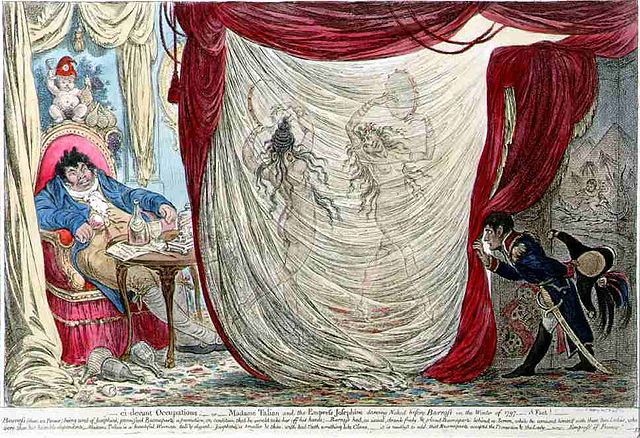
Thérésa Tallien was one of the more outrageous of all the Merveilleuses. She was instrumental in the fall of Robespierre; her lover and later husband, Jean Lambert Tallien, a member of the National Convention. was incensed when she was sent to prison in 1794 (Josephine was also imprisoned at the same time). This led directly to the Convention’s overthrow and execution of Robespierre and the end of the Terror.
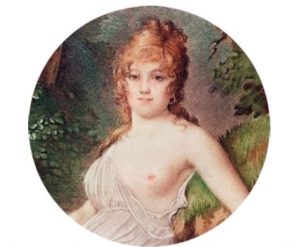
There were remarkable similarities between the prison chemises and short hair worn by the high society women who had fallen foul of Robespierre and been imprisoned, and the loose and flowing outfits they wore as marvellous women. Thérésa Tallien (above) famously appeared at the Opéra on one occasion wearing a diaphanous gown with no underwear underneath. Decadence and nakedness marked the fashion of les merveilleuses, perhaps not surprising considering the lightness and relief they must have felt at surviving prison.
The neo-classical style of the Marvellous Ones continued until Napoléon, as Emperor, decreed it was not suitable fashion for Josephine, by now his Empress.
One evening Napoleon, after staring at a group of merveilleuses in their transparent gowns, walked over to the fireplace and began throwing logs onto the fire. When someone asked what he was doing, Bonaparte replied loudly, ‘We must have more heat! Don’t you see that these ladies are naked?’
Andrea Stuart, The Rose of Martinique, Grove Press, 2003
Decadence and scandalous dress was not suitable to the dignity of the court of Napoléon, and the era was over. Under the Napoléonic codes, women would soon lose the precious few rights they had gained during the revolution, and whilst the high empire silhouette continued for some time, fashion soon became restrictive again.
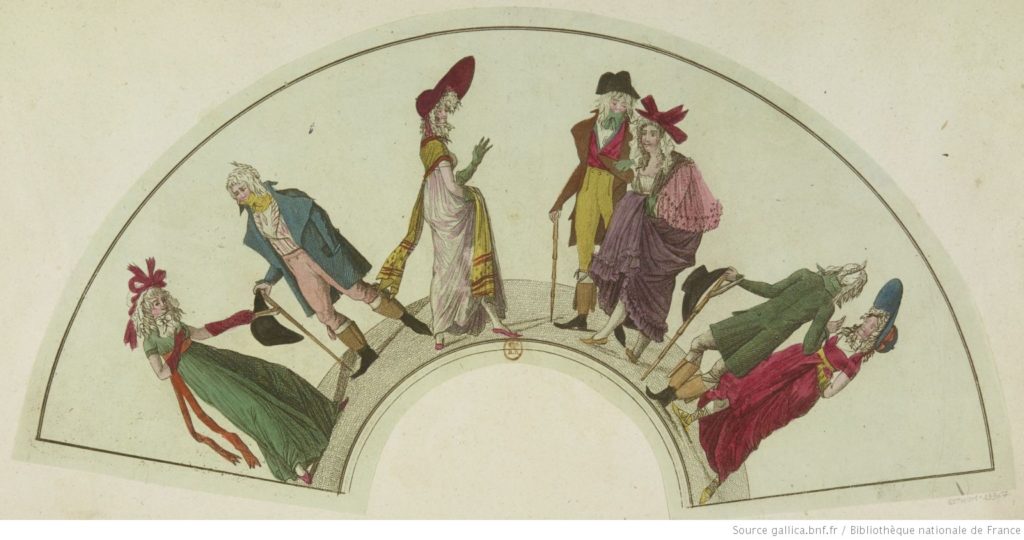
These marvellous women left an indelible mark on the history of fashion. They lived in desperate and uncertain times, as French society turned itself upside down and inside out, which gave them the freedom to push the boundaries and emphatically refuse to conform to accepted modes of both fashion and behaviour. What was ‘normal’ about life during the French Revolution? Very little, and les Merveilleuses threw off the burden of the past and looked to the future, one in which they could be as outrageous as possible.
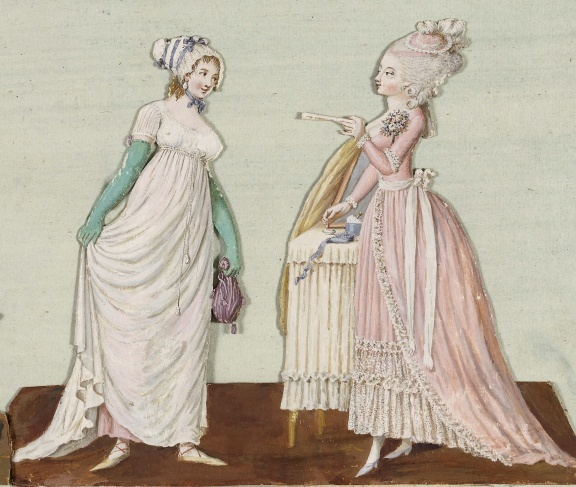
Don’t forget to take a look at the Shop for printable French ephemera.
